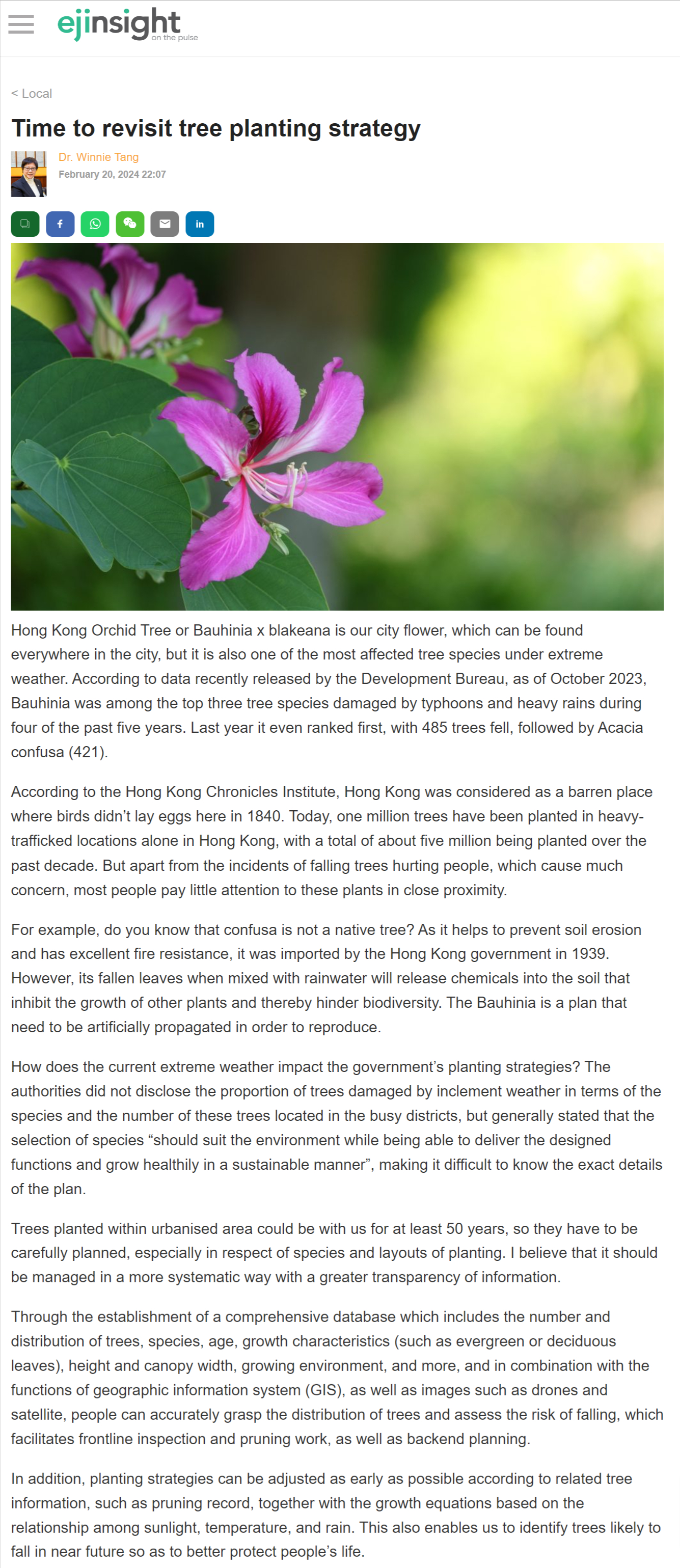網上版請按此

Time to revisit tree planting strategy
Hong Kong Orchid Tree or Bauhinia x blakeana is our city flower, which can be found everywhere in the city, but it is also one of the most affected tree species under extreme weather. According to data recently released by the Development Bureau, as of October 2023, Bauhinia was among the top three tree species damaged by typhoons and heavy rains during four of the past five years. Last year it even ranked first, with 485 trees fell, followed by Acacia confusa (421).
According to the Hong Kong Chronicles Institute, Hong Kong was considered as a barren place where birds didn't lay eggs here in 1840. Today, one million trees have been planted in heavy-trafficked locations alone in Hong Kong, with a total of about five million being planted over the past decade. But apart from the incidents of falling trees hurting people, which cause much concern, most people pay little attention to these plants in close proximity.
For example, do you know that confusa is not a native tree? As it helps to prevent soil erosion and has excellent fire resistance, it was imported by the Hong Kong government in 1939. However, its fallen leaves when mixed with rainwater will release chemicals into the soil that inhibit the growth of other plants and thereby hinder biodiversity. The Bauhinia is a plan that need to be artificially propagated in order to reproduce.
How does the current extreme weather impact the government's planting strategies? The authorities did not disclose the proportion of trees damaged by inclement weather in terms of the species and the number of these trees located in the busy districts, but generally stated that the selection of species "should suit the environment while being able to deliver the designed functions and grow healthily in a sustainable manner", making it difficult to know the exact details of the plan.
Trees planted within urbanised area could be with us for at least 50 years, so they have to be carefully planned, especially in respect of species and layouts of planting. I believe that it should be managed in a more systematic way with a greater transparency of information.
Through the establishment of a comprehensive database which includes the number and distribution of trees, species, age, growth characteristics (such as evergreen or deciduous leaves), height and canopy width, growing environment, and more, and in combination with the functions of geographic information system (GIS), as well as images such as drones and satellite, people can accurately grasp the distribution of trees and assess the risk of falling, which facilitates frontline inspection and pruning work, as well as backend planning.
In addition, planting strategies can be adjusted as early as possible according to related tree information, such as pruning record, together with the growth equations based on the relationship among sunlight, temperature, and rain. This also enables us to identify trees likely to fall in near future so as to better protect people's life.
Dr. Winnie Tang
Adjunct Professor, Department of Computer Science, Faculty of Engineering; Department of Geography, Faculty of Social Sciences; and Faculty of Architecture, The University of Hong Kong